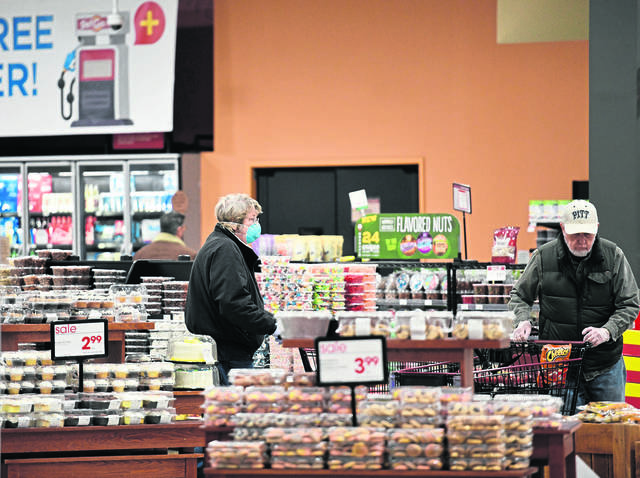https://naviga.triblive.com/opinion/dr-christopher-koman-normalcy-bias-hampers-fight-against-covid-19/
Dr. Christopher Koman: Normalcy bias hampers fight against covid-19

Christopher Koman, M.D., is a family physician with Genesis Medical Associates in McCandless.
A farmer has a pond. On day 1, there is one lily pad. He knows that they grow fast and will double every day and completely cover his pond in 30 days. On what day will his pond be 50% covered? On what day will his pond be 1% covered?
Surprise:
Day 24 — 1% coverage.
Day 29 — 50% coverage.
I am treating covid-19 patients. My role has been more of keeping people out of the hospital and preventing the virus from hitting vulnerable, high-risk groups. But recently I’ve been intrigued by some of the psychological factors playing out during our country’s pandemic response.
As a physician I’m guided by research and data to do the right thing for patients, and most of all to “do no harm.” I’ve been baffled by how our country is handling this crisis given its exposure to plenty of research and data.
At best, there has been a hodgepodge of decision-making. My emotions urge me to call out all of those who I think are deaf to the health warnings. This extends to our chief executive and goes all the way down to the people that I see in grocery stores not wearing masks.
I don’t want to believe that people are really that obtuse, so I’ve been searching for an explanation for the reckless behavior that puts us all at risk for covid-19 infection.
There’s a barrier we need to recognize. Psychologists call it normalcy bias.
Normalcy bias is the psychological state of denial, the tendency to believe that things will continue to go on the way they always have. It’s how many of us are wired. It’s a defense mechanism. Unfortunately, in the face of crisis or impending doom, it denies the majority of us the ability to act effectively. Normalcy bias prevents us from understanding the possibility or seriousness of a crisis or natural disaster. In essence, people just can’t cognitively deal with it.
A 2018 study showed that 41% of people in the U.S. were not prepared for a disaster. Psychologists have gone further. By studying automobile accidents, airline accidents, nuclear disasters and natural disasters, they have shown that only about 30% of people can act quickly and decisively in a crisis.
Let’s consider the farmer’s example above. He doesn’t want his pond choked with lily pads. He knows what will inevitably happen if he does nothing. What he may not know is how long it will take to happen. Since it takes 24 days for only 1% of his pond to be covered, he sees no big problem and has had the past 24 days to reinforce his normalcy bias. By the time he realizes his pond is entirely covered in just six days, it’s too late. He is overwhelmed. He missed his chance to take care of the problem.
Now let’s apply the farmer’s problem to the coronavirus pandemic. Instead of lily pads, we are now talking about invisible particles that spread through the air and from surfaces. Those particles can hide in someone for up to two weeks before it’s obvious they have them. There are countless warnings about the danger of these particles. Unless you are in health care, chances are you don’t know anyone with covid-19. Normalcy bias leads us to think there isn’t much of a problem.
As for government response, leaders have collectively shown us normalcy bias on steroids. In addition, inconsistency has fanned the flames.
Some state’s governors have moved quickly, while others waited to do anything. As of this writing, seven states have not instituted stay-at-home orders to slow the virus. It would come as no surprise that these same states also have a later estimated peak in coronavirus cases and will probably act as a viral reservoir for all of us, extending the infection curve.
President Trump’s conflicting messages amplify normalcy bias. Originally, he downplayed the threat, only to find himself quickly overrun with lily pads. Despite an abundance of research evidence, he and his administration were caught unprepared. He won’t wear a mask. He is giving us all a master class in normalcy bias.
There are many other factors to the U.S. pandemic response, but the virus is dictating its own terms. Fortunately, we are learning more every day and can predict it to a reasonable degree.
It appears that the biggest problem we have right now is with ourselves. Normalcy bias is impairing us from making the best decisions. Let’s call out our normalcy bias, accept it, use it as cover, save face with it and move on. Let’s get it together, everyone. For the 70% of people who can’t act in a crisis, that’s the curve we need to flatten.
So I’m asking those afflicted with normalcy bias to follow the doers. It’s OK. It’s for our collective good. Here’s what the doers are saying:
• Wash your hands
• Stay at home.
• Practice social distancing
• And wear a mask — if not for yourself, then for someone you care about, or maybe just for that other person in the grocery store aisle.
We are all in this together, so be kind. Thank health care workers and first responders — anyone working against the pandemic. They are experiencing the most stressful time of their professional lives.
Lastly, thank the people who taught them. They gave us the knowledge to keep us all safe.
Copyright ©2025— Trib Total Media, LLC (TribLIVE.com)
